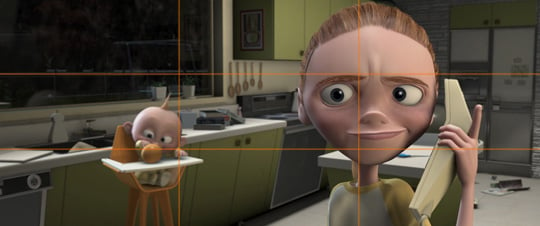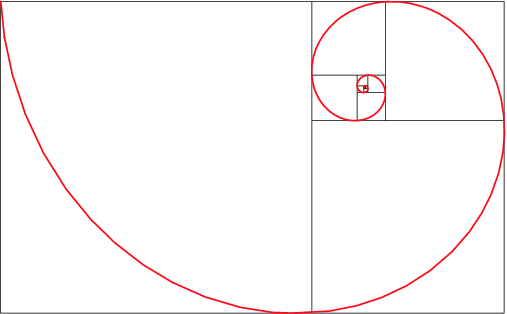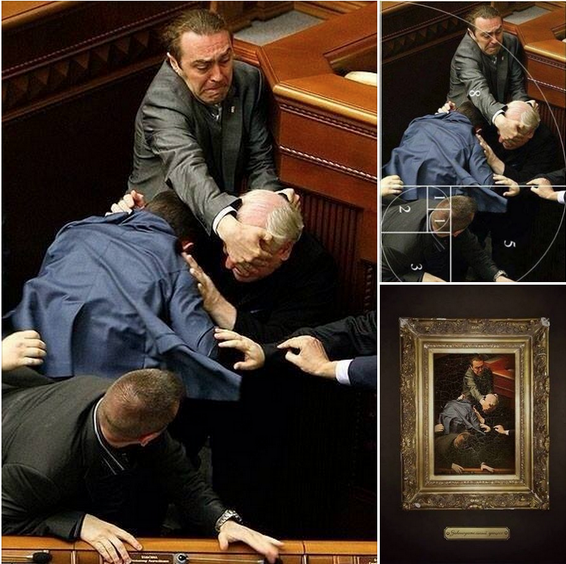Should I move the camera a little bit to the left or a little bit to the right?
You stand back and strike the pose of a renaissance painter about to carve into marble and, while it’s no Venus de Milo, what you’re about to do is equally as delicate. But you’re on a schedule and if you don’t get the shot in the next five minutes, you could easily find yourself scraping your feet as you look for another job. Harsh, but this is serious business.
This is composition.
For those who don’t have the time, the willpower, or the want to read for themselves: composition is basically how things are put together in an image (moving or not). We can look at articles like Chris Knight’s “The Ultimate Guide to Composition,” as a bouncing off point.
Images in their basic simplicity, are made of lines. Lines that form boxes, lines that intersect, and lines that draw the viewers’ eyes to where they need to be. Think of composition as a laser pointer. It's a subtle technique that filmmakers will use to get someone to subconsciously focus in on one aspect of the shot. But just talking about the technical jargon behind a film doesn't necessarily teach us what that means. Why should we use center composition? What's the difference between diagonal and horizontal arrangements? Is composition really that big of a deal?
But don't just take it from me. Don't just take it from Chris Knight. Take it from a physical product that was successful in its own right, that had this technique honed down to an art. Let's look at Pixar's The Incredibles. Directed by Brad Bird, and released back in 2004, the film is a cult classic (within animation).
Really, it's a movie you either love or hate and I will be the first to say I had been the latter up until a few years ago. Honestly, I could go on forever about why this movie was one of the most well-put together films of its genre (writing and plot issues aside), but today we'll focus on its composition.
For time's sake we'll look at its opening sequence:
But why?
This in part, lies with how our brain takes in information. Yes, we have a certain affinity towards the symmetrical but there is something about focusing ourselves into the middle of an image that throws us off. Objects can be symmetrical, but an image has to have action. And that's the problem with centering your subjects. It immediately erases any depth around them and gets rid of the action in a scene. This is because your image has to literally stop in the middle. It's too abrupt for our senses to take in from a "two-dimensional" point of view. And it's boring.
But this is why it can be such a powerful tool as well. As seen in the above video, centering the shot only works to really set up the feel of the interviews. While candid, they don't do much to give us insight into how these characters works. Yes, yes, we understand how they might feel but for the moment we are the interviewers. The common public that looks at these heroes in quite a two-dimensional way. And that's the problem set up, because these heroes are human. They make mistakes and they certainly aren't gods.
For those who haven't seen it, the core of the movie is the dynamic between those who have superpowers and those who do not. For years, these heroes were idolized and put up on a pedestal. But through a series of events, their powers back-fire on them and they're forced to hang up the masks and gloves. They are forced to fit in. Yes, there's a lot more to the actual movie's plot but stay with me.
The above "interviews" only work because of the composition. The image is scaled down and positioned right smack dab in the middle of the frame. Adding to that, they've made it so every character is also put within the middle of their own shot. This gives us a layered centering of objects. They force us to look at these people as the movie looks at them.
As superheroes they are the center of attention. They own their surroundings in an almost arrogant sort of way. And because we've got nothing to look at but them, we feel uncomfortable. Obviously, this is old. Obviously, something isn't right. But in that moment, we are the public before the storm. All of our attention is focused on these people and we are literally watching their every move. But there's something about giving them all of our attention, that makes us feel uneasy.
Then it transitions to the sequence below:
While it may not be noticeable with how it was uploaded, but the composition changes in many ways. We've just faded out from the interviews and our perspective literally increases (meaning the screen literally gets bigger). It may not be what you consider composition but it is. It's creating invisible lines that expand our view and it adds dimensions.
Before, were were just watching the characters. Now, we are actually getting a glimpse at what they do. Immediately, the movie utilizes everything from golden triangles to the "Rule of Thirds." As the shots are set up, we can see that hardly anyone dominates the space and hardly anyone is centered in the middle anymore. This is a fantastic way to put action and life into the scene. From the skyscrapers in the back (during the car chase) to the sidewalk as the little old lady cries for her cat, the filmmakers are creating subtle lines that pull our attention inward to the points of focus (mostly Mr. Incredible in this case).
By not having him centered anymore, they also start to engage the audience. We are constantly moving our eyes to find the subject of the shot. And for an action-heavy sequence, this works delightfully well in keeping us focused on the movie. The constant movement confuses us just enough to make us want to notice everything. But it also makes us start to root for him. For the superheroes. And coming from those interviews, it feels good. Because we want to, don't we? I mean, they're superheroes.
Even in the last few shots, as she flings herself in to the sunset, we are left wanting more. We've come a long way from just staring at these people as they grin from the center of an interview to rooting for them as they do what they do best. And that's fantastic because it won't last. But by making us have to work to root for these guys, it nicely sets us up to become more emotionally invested as things start to crumble.
And this couldn't be achieved without proper composition. We, as an audience, don't want to just sit there and stare at something head-on. We need movement. We need depth. We need action. We need the characters to move: a little bit to the right, a little bit up, a little bit down, and a little bit to the left.



















.jpg)










